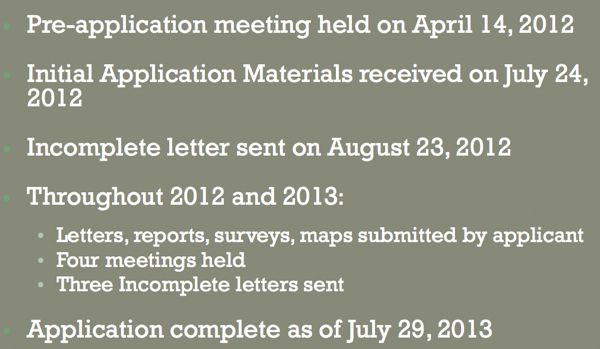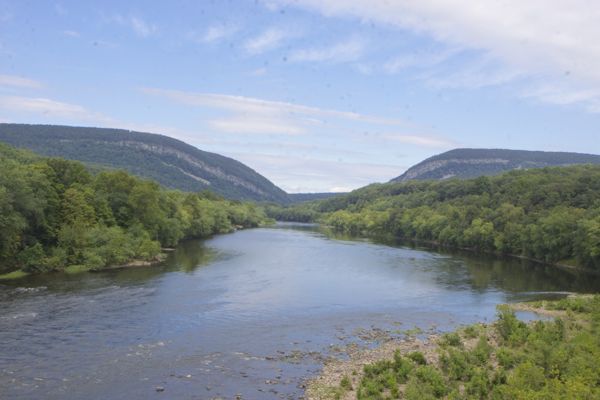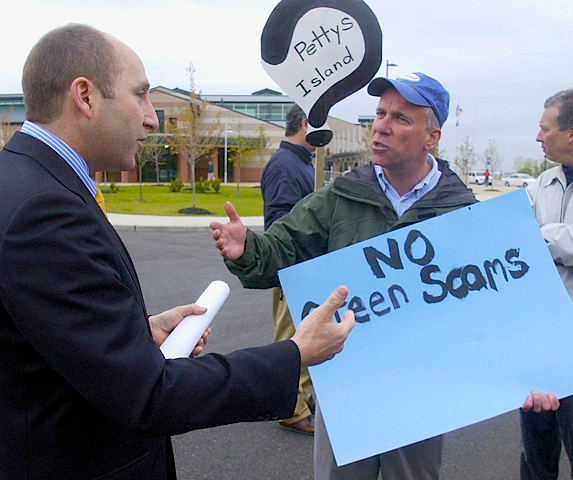The Pinelands Commission’s Immmaculate Finding
Executive Director Makes Staff Walk The Plank for SJG Pipeline Review
Staff deny that a key finding was ever made by staff
“Undisputed” finding evaporates into thin air
Slippin’ into darkness
I don’t remember, I don’t recall
I got no memory of anything, anything at all ~~~ Peter Gabriel (1980)
There was some “slipping’ into darkness” during last Friday’s (June 12) Pinelands Commission meeting, which veered into an Orwellian and in depth discussion of the “new” pipeline application submitted by South Jersey Gas Co. (SJG).
You been slippin’ into darkness, oh, oh, oh, oh
Pretty soon you’re gonna pay, oh, oh, oh, oh ~~~ War (1971)
Remarkably, according to the Friday presentation by Pinelands staff, it seems that there was an immaculate finding that the original SJG application was “inconsistent with the CMP”.
The finding that the original SJG application was “inconsistent with the forest standards of the CMP” was the sole reason that SJG sought – and the Pinelands Commission allowed – the Board of Public Utilities MOA to resolve the inconsistency with the CMP by demonstrating an equal level of protection under Pinelands regulations.
So, let’s look at the history of that immaculate finding.
We start with the finding and project review process presented to the public by Branwen Ellis of the Commission staff on December 4, 2013 – the power point is undated, but see this contemporaneous post:
The Pinelands staff presentation by Ms. Ellis very clearly states “The proposed project does not meet this standard”:
That finding drove months of acrimonious public debate before the Pinelands Commission.
That finding was discussed in a trove of embarrassing emails between SJG lawyers and Exectutive Director Wittenberg and Counselor Roth.
That finding that resulted in the denial of the BPU MOA by a deadlocked 7-7 vote of the Commission.
That finding, Commission Chairman Lohbauer stated, was “undisputed” in a January 23, 2014 letter to the Press of Atlantic City defending the Commission’s vote on the MOA:
It was undisputed that the applicant’s intention to bury pipeline through forest area -even under a state highway shoulder – was inconsistent with the CMP.
To be approved, the applicant needed to quality for an exception. There are only two standards for exception: waiver of strict compliance and intergovernmental memorandum of agreement. The application pursued the memorandum-of-agreement standard, which is only available to governmental entities.
But, no, we’re supposed to forget all this.
As it turns out, that critical finding was never made by the staff – at least according to the Friday presentation of “I don’t recall” – “to the best of my recollection” Chuck Horner, Director of Regulatory Programs for the Commission.
Chuck was forced to walk the plank for the political decisions of his boss Executive Director Wittenberg and her legal “Counselor” Stacey Roth, who were both following Orders from the Governor’s Office.
I felt bad for him – but he fell on his sword rather that tell the career ending truth.
I repeatedly have written about and demanded to know, at numerous Commission meetings: exactly just who authorized Stacey Roth to negotiate a MOA with SJG months before the Commission publicly discussed a MOA with SJG?
I repeatedly have demanded to know: just how did the BPU April 2013 Order approving the SJP pipeline route include a MOA with the Commission, months before a MOA was publicly discussed by the Commission?
I never got answers to those questions.
The OPRA public records request I filed to get to the bottom of this story was denied by the Commission, see:
And now, not only are we not being told who authorized the MOA or told BPU to include it in their Order, but we’re supposed to forget the history of the finding that the SJG application was inconsistent with the CMP!
If you listened to Chuck tell the story, SJG apparently came to that conclusion (i.e. that their pipeline project was “inconsistent with the CMP”) all by themselves.
There was no formal written finding made by Commission staff that the SJG project was “inconsistent with the CMP”.
There was no or oral communication by staff to SJG about any of that –
Or, as Mr. Gabriel sang – about anything, anything at all.
Momma I’m depending on you to tell me the truth… (listen)
[Coming soon: South Jersey Gas lawyers explain the meaning of the word “only” – impatient wonks and intrepid journalists can get a sneak peak of that remarkable argument from the horses mouth on page 37!]






